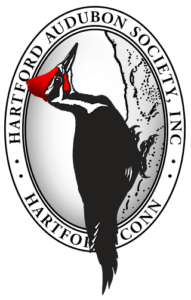Six birders took the September 29, 2017 ferry at 3pm from Portland ME 212-miles across the GOM (Gulf Of Maine) to Yarmouth NS, stayed in a local hotel that night, and returned the next morning at 8am, with passports in-hand. The large ship (the 300-foot Alakai Cat Ferry) was super stable and nobody got seasick.
Our stated goal was to find at least one SKUA, preferably a unambiguously identifiable Great Skua, probably as an early arriving winter visitant from Iceland. We focused especially on that eastern 30% of the route where we had seen skuas several times in recent years, and we were not disappointed! During our six hour return trip on September 30th we had five sightings of skuas in that target zone! At least 3 and maybe 4 of those were different individuals, including one South Polar Skua and at least 2 different birds being identifiable as Great Skuas. The Great and South Polar Skuas were lifers for a few birders.
Although we had pretty good looks at these skuas, including one that passed in front of the ferry 150-200 feet away, most of our photos (three birders had big telephoto lens cameras) were out of focus, because their cameras auto-focused on the very distinct wavetops rather than the skua flying in the middle of the frame. Bill Asteriades dug through his thousand photos and was able to find some well-focused shots of our bird #5, a dark Great Skua, in molt, and showing diagnostic gold streaks on its mantle and scapulars, which was enough photographic evidence to corroborate our binocular descriptions of the birds.
The eBird regional coordinators for both the ME and NS sides of our route confirmed all our skua IDs.
In total, we saw 25 species with many birds passing close to the ferry, and we kept a timed log counting all species seen on our crossings. Other notable species included Leachs Storm-petrel and Sooty Shearwater, rare for this time of year, dark morph Pomarine Jaeger, Black-legged Kittiwake and Northern Fulmar. Marine mammals in deeper GOM waters included sightings of 8 Finback Whales, 32 Atlantic White-sided Dolphins and 4 Harbor Porpoises.
Trip details are available at this site: Trips33.blogspot.com
Note that this was the fourth year of our annual HAS Skua Search two-day trips across the GOM, looking for skuas, and finding them principally in Canadian waters. Three of those trips had good enough weather to sail, and all those 3 trips had skuas:
2017: two Great Skuas, one South Polar Skua, two Skua species.
2016: two Great Skuas.
2015: trip cancelled by extreme weather.
2014: one Great Skua, three Skua species.
Please join us next October on this exciting round-trip across the Gulf Of Maine.
Respectfully submitted,
Tom Robben & Bill Asteriades
